

In 2018, there were around 1500 MVNOs.
In 2025, it has been forecasted that there could be over 2000 MVNOs.1
Singapore has brands like MyRepublic and Singtel’s gomo. The US has brands like Visible while the UK has brands like O2’s giffgaff.
With all of these digital telco brands emerging in the market, a key question emerges: what kind of advantages does a digital telco brand have over established telco brands?
DMOs: Redefining Telco Branding Through Lifestyle Relevance
Subscriber growth in today’s telecom markets is becoming more elusive and expensive. Traditional mobile network operators (MNOs) are facing escalating acquisition costs, shrinking loyalty, and stiff competition from digital-native challengers.2
PwC and Omdia predict that the compound annual growth rate of the global telecom industry would likely be at 2.9% through to 20283 which makes defending your market share more vital.
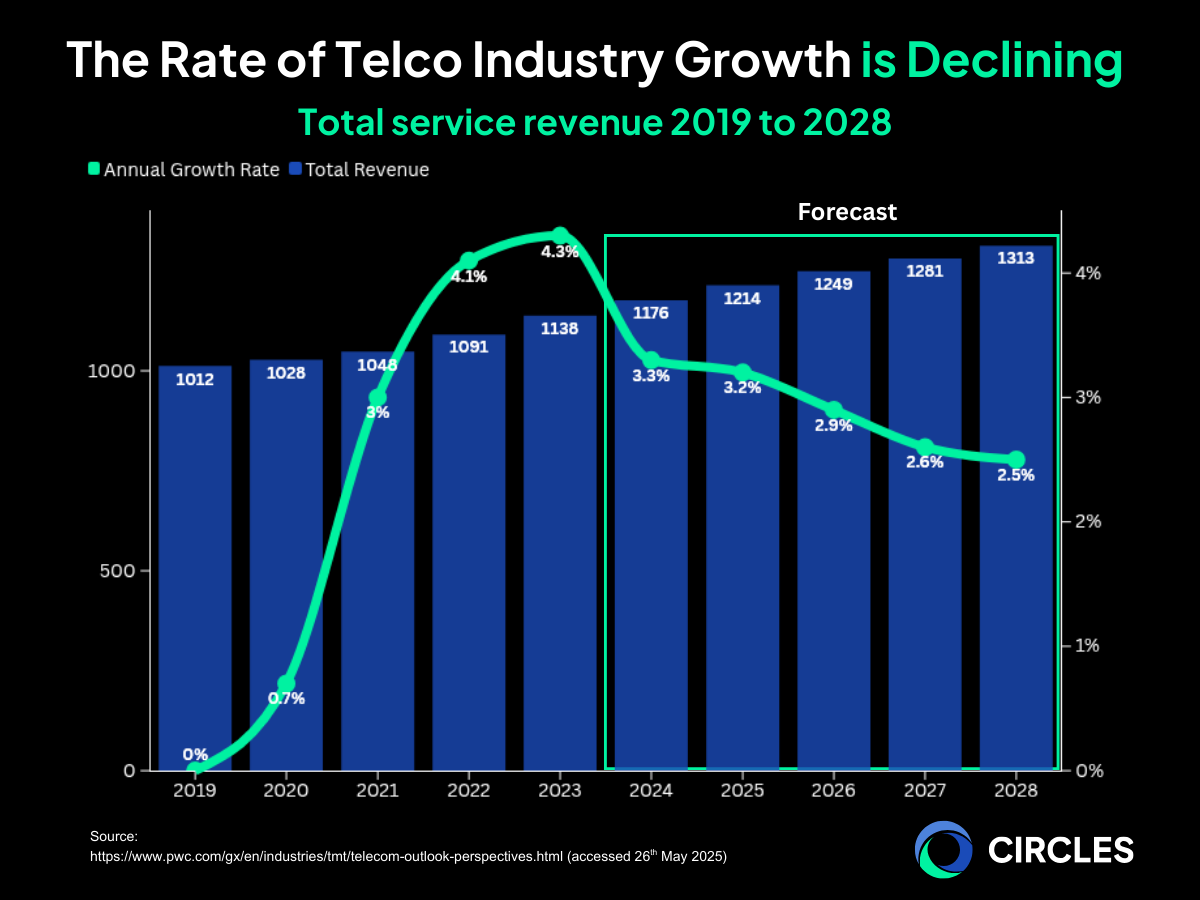
In this environment digital mobile operators (DMOs), are redefining the rules of engagement. DMOs refer to telco brands that offer digital-native experiences. Agile, lifestyle-aligned DMO brands that are tailored to each market’s DNA have demonstrated that they can be more efficient at reaching their target niches and win customer loyalty through brand engagement, speed, and exceptional experiences.
ONIC’s youth-centric launch in the Middle East with its culturally resonant #SarUthaaHaraa campaign quickly gained traction and market share. In Japan, povo2.0 earned industry accolades by combining real-time engagement with rapid digital deployment of new features on its digital app through the innovation engine, gaining 30% higher app engagement and 8% higher average revenue per user in early tests.
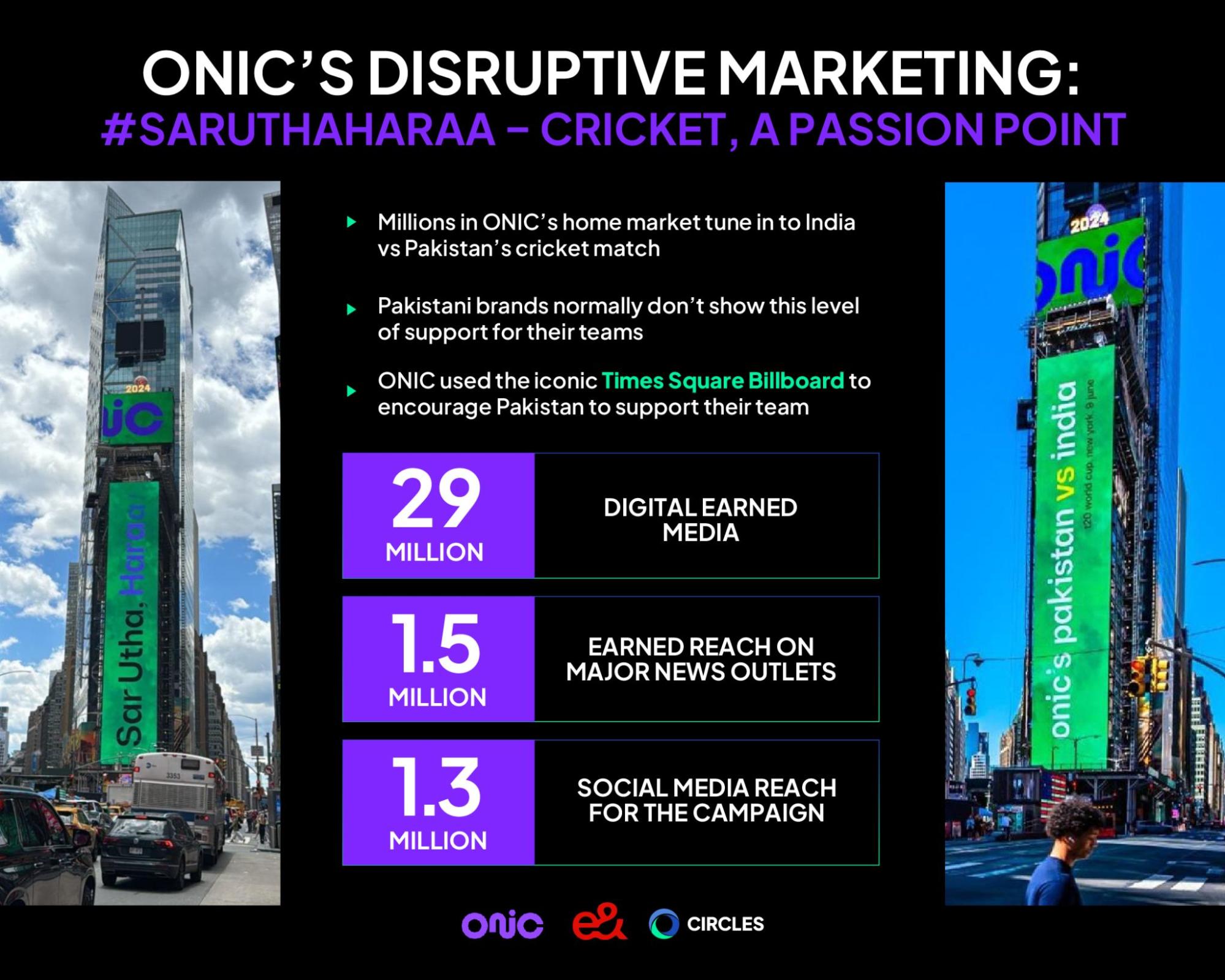
Digital telco brands are able to acquire customers at approximately half the cost as their parent companies,4 increase lifetime value with tactics that go beyond “data and price" and build enduring brand equity.
This article explores different areas where DMO brands can complement legacy telcos.
Lifestyle-Centric Positioning
Digital sub-brands can target specific niches and personalize their branding and campaigns around that target audience as opposed to MNO flagship brands which normally promote offers centered on data or price to capture as wide a demographic as possible.
Successful DMOs, on the other hand, can position themselves around a customer segment’s identity and culture. This is achieved by anchoring the DMO brand in customer lifestyles, aligning with the values and habits of today’s digitally native users.
Circles conducted research to better understand the power user subgroup among Digital Natives that we’ve dubbed Digital Pioneers. This research uncovered four primary mindsets:
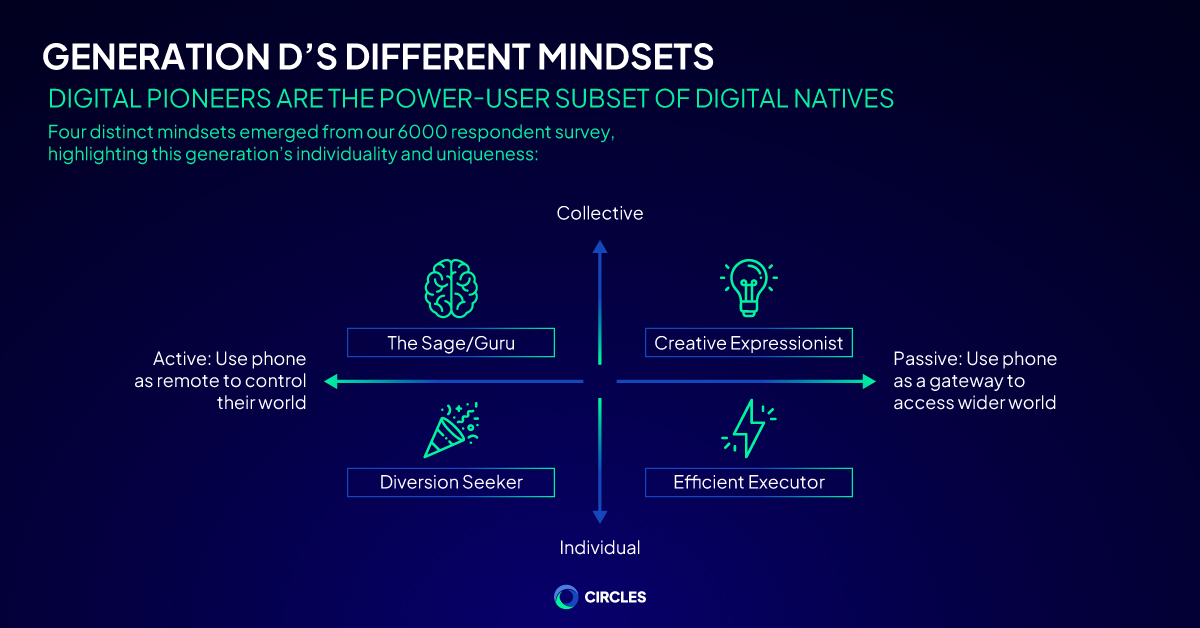
This reveals how dynamic user groups can be and lends credence to the idea of microsegmentation. You can read more about Sages and Creative Expressionists here and Diversion Seekers and Efficient Executors here.
Digital sub-brands are useful in situations where the differentiation offered by these digital telco brands can help accelerate customer acquisition of a target microsegment, or pre-emptive self-cannibalization is preferable to losing market share to new entrants.5
This positioning is especially critical in a world of contract-free plans and two-SIM usage. Today’s Gen Z and Gen Alpha consumers worldwide are familiar with digital customer journeys and expect seamless, intuitive service from discovery to activation without ever stepping into a store.
This digital-first and lifestyle-centric approach has been field-tested.
Branding as a Lever for Lower Subscriber Acquisition Costs
DMOs offer a fundamental advantage in lowering subscriber acquisition costs.
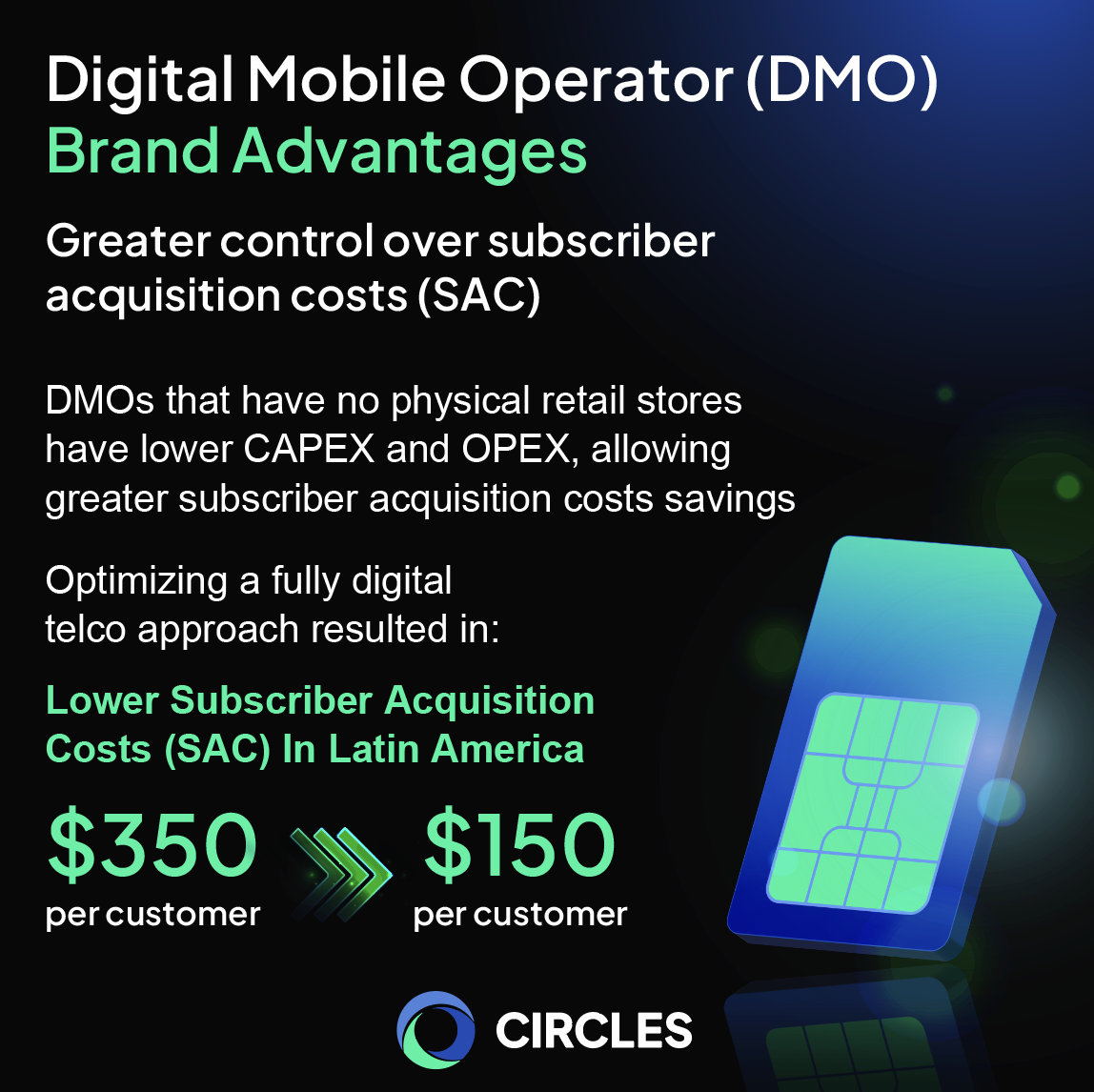
Traditional telcos face high subscriber acquisition costs (SAC) due to their dependence on retail infrastructure: physical stores, commissions, and legacy marketing models. In contrast, DMOs operate with digital efficiency. By removing overheads, they reinvest more budget into high-performing digital channels and onboarding experiences.
As Priya Seevaratnam, Circles’ Head of Brand & Experience, explains:
“When you launch 100% digital, you also have to think about acquisition being 100% digital. You immediately save on all the CAPEX that you would’ve spent on traditional, retail-based marketing without sacrificing quality or customer experience.”
The result is full funnel visibility and accountability as the DMO will know exactly how its marketing and sales spend converts and where these can be optimized.
SAC efficiency stems not only from media execution but also from brand clarity. Aligning with the lifestyles of the DMO’s target audience will provide greater organic reach and higher conversion rates. One example of a full-funnel campaign would be:
This model works: one fully digital flanker brand in Mexico reduced CAC by more than half within 12 months by shifting entirely to digital channels by leveraging influencer campaigns, boosted content and referral.
Digital-first strategies allow precise channel tailoring. In Mexico, Meta platforms delivered better marketing performance than search. In Singapore, informed buyers relied more on Google. DMOs have the “speed boat” flexibility to pivot accordingly that legacy telco brands may not be able to afford.
The Long Game: Extending LTV Through Customer Experience
While reducing SAC is critical, long-term profitability depends on growing customer lifetime value (LTV). In subscription businesses, retention is the engine of growth, and stemming churn is key to a brand’s survival.
DMOs powered by the right tech stacks and mindsets towards their target audience can build sticky, satisfying experiences that can build customer loyalty.
Personalization at Scale Powered By New Tech Stacks
New digital-first telcos can be used as a testbed for new software that the flagship telco brand can eventually adopt. Successful tests could lead to software cost savings that come from moving away from maintenance-heavy legacy tech stacks while giving the telco brand a full digital-native experience.
Choosing the right telco software suite can enable DMOs to use data to tailor everything from plan selection to in-app engagement. They bundle entertainment services, gamify loyalty, and prioritize user control. This creates emotional loyalty, not just transactional usage.
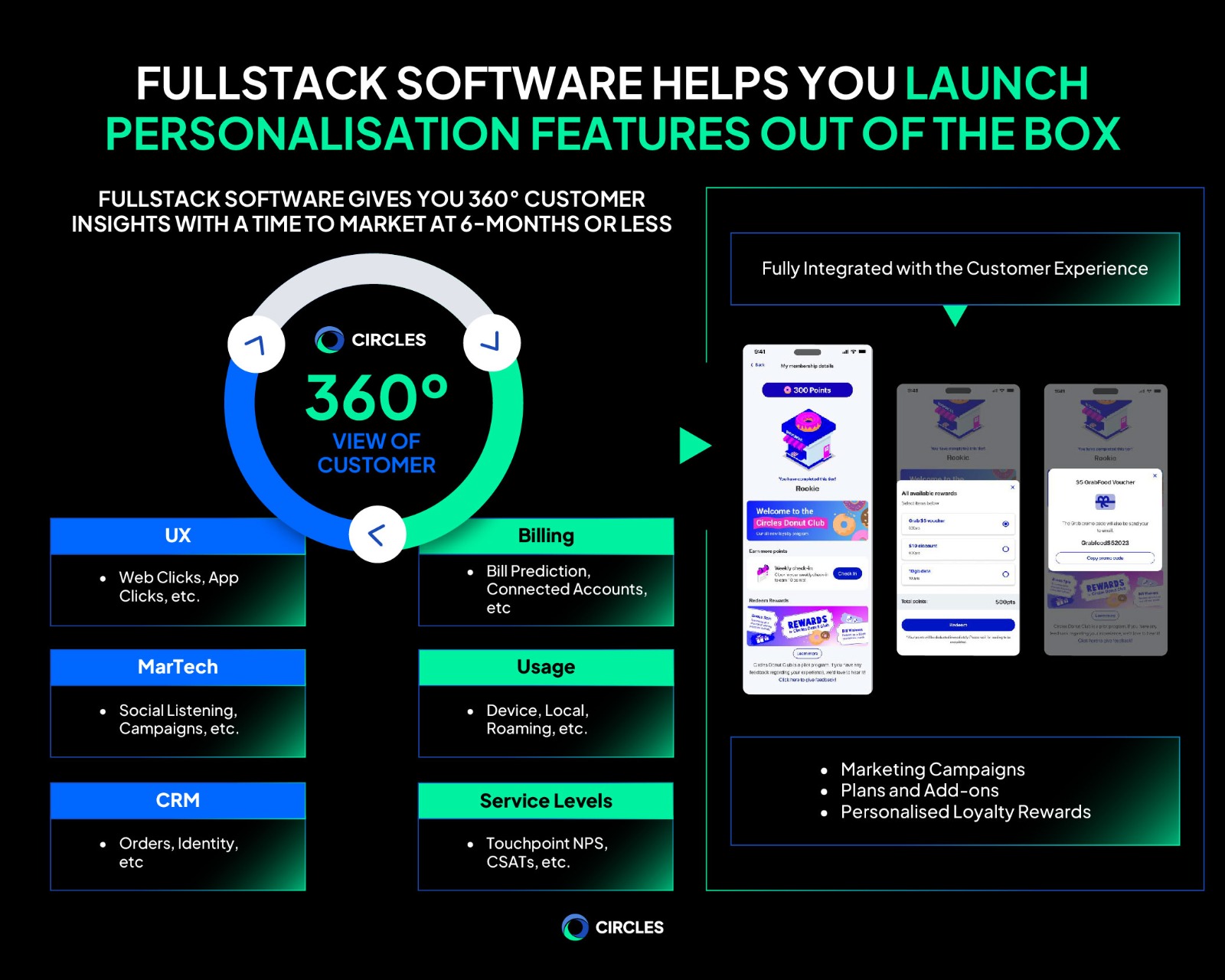
While some organizational structures and roles need to be replicated, digital mobile operator brands have the benefit of not being tied to existing software infrastructures. That means new software stacks and agile team structures can be tested without sacrificing existing customer experiences and relationships.
New tech stacks also enable faster responses to market changes. Strong brands are able to understand the changes in their customers’ needs and demands, and what sustains this performance is real-time customer intelligence. Processes such as monthly sign-up surveys and ongoing experience tracking can be merged with 360 degree customer insights based on everything from their device and location to their data usage and plan purchases.
Mexico’s Wim found that 34% of its customers came because of add-ons like Paramount+ and Amazon Prime entertainment bundles. This approach is also being used to refine the types of perks offered such as airport lounge access.
LTV-Driven Operations and Customer Insights that Drive Strategy
Churn prevention comes from careful preparation and proactive processes. Product and marketing roadmaps are continuously updated based on real-time customer data. As Priya Seevaratnam notes:
“We’re always looking at information from customers, like more real time rather than more, I would say more proactive rather than a reactive approach. We look at social media sentiment, NPS surveys, and also feedback that we get via customer support which all ties back into inputs for managing churn.”
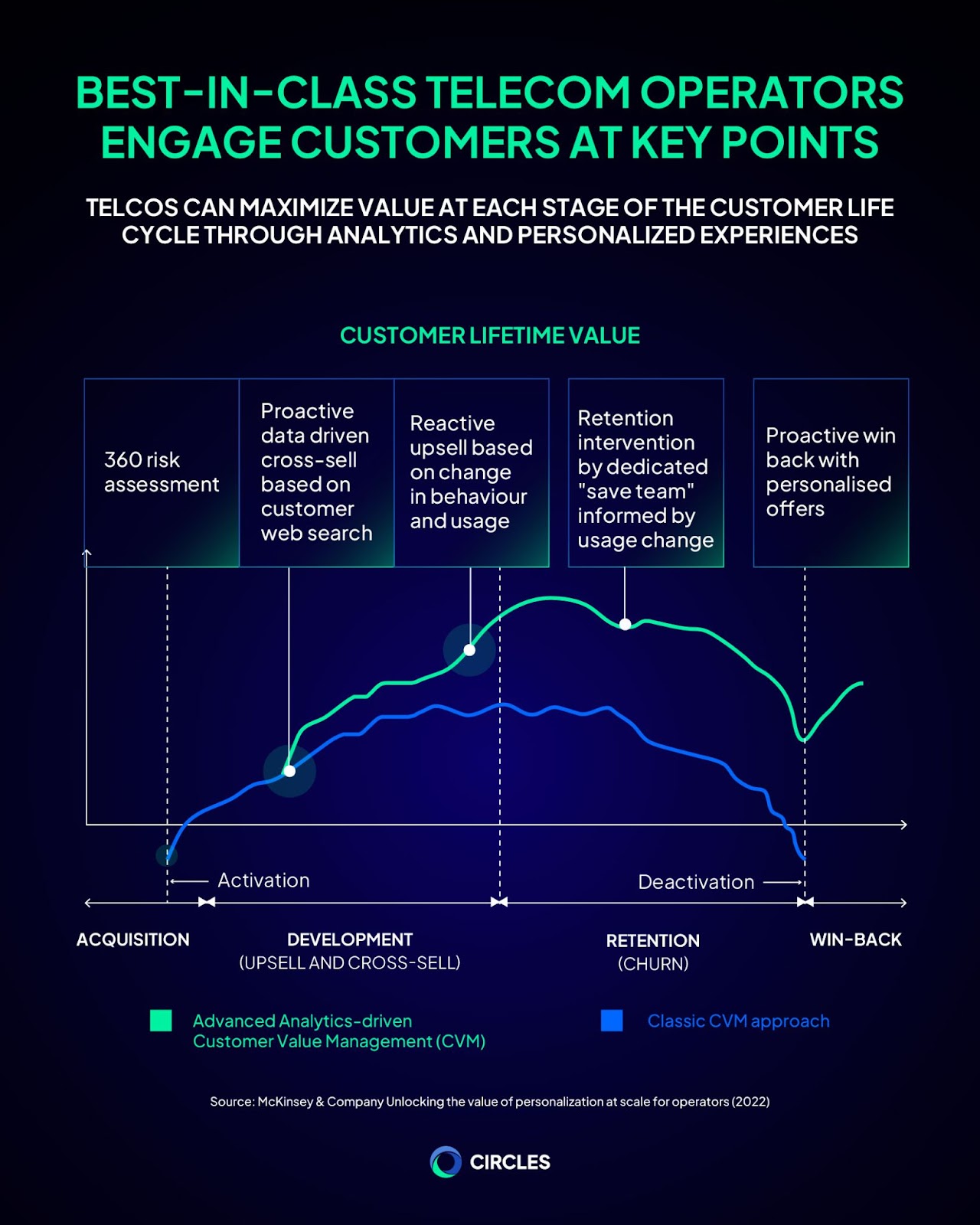
When managing telco brands, Circles tracks LTV weekly. Circles’ Customer Value Management (CVM) systems use NPS data, social sentiment, churn analytics, and customer satisfaction scores (CSAT) to flag and fix issues before they escalate.
This system tracks 200+ behaviour variables that are associated with churn in an integrated data lake. These are then analyzed by 30+ continuously improving machine learning models that score churn probability. Semi-automated interventions are powered by these real-time insights to provide differentiated offers to delight customers while reducing business costs.
This proactive model prevents churn-inducing moments like bill shock or silent dissatisfaction. When an NPS score dips, customer happiness teams trace it. When revenue leakage appears, customer support teams are ready to intervene.
Strategic Implications for Legacy Telcos
The DMO branding model can offer legacy telcos both growth and brand transformation.
Build Processes and Upgrade to Software that Enables CAC & LTV Optimization
DMOs that own the full customer journey will succeed. With the right tools and processes, they can have full control over the funnel, real-time data feedback loops, and leaner operational models allow DMOs to continuously optimize CAC while improving LTV.
To achieve that, legacy telcos must build systems that allow this kind of agility, such as real-time analytics, tighter brand and product feedback loops, integrated CX teams and responsive BSS/OSS and martech stacks, that allow similar visibility and responsiveness. Another alternative, is to launch a sub-brand DMOs to test the new software and before migrating their main brand over.
Design Flanker Brands for Real Differentiation
New brands need to be built on deep customer insights. They need to speak to cultural insights, unmet customer needs and deliver a distinct experience. ONIC and povo2.0 succeeded not just because they were digital, but because they delivered on the differentiation they promised.
The DMO approach involves building up brands with the right value proposition framework, brand story, and digital-native growth strategy. For legacy players, these digital flanker brands can complement their existing flagship brands by defending other niches before other competitors arrive.
Use DMOs as Innovation Testbeds
The agility of a DMO allows for faster iteration and safer experimentation. From gamified loyalty to AI-driven support, DMOs can test new ideas and scale what works across the core brand.
Conclusion: Branding is the New Battleground
The telecom market has evolved, and many brands are now striving to keep up. DMOs offer a glimpse into what’s possible: telcos that are culturally resonant, digitally efficient, and structurally agile.
For legacy operators, the challenge is clear. SAC and LTV must be optimized in parallel, and differentiated brands can play a key role. Sub-brands must be distinct, not diluted. And customer experience must be treated as a strategic pillar.
At Circles, we help telcos make this leap away from commoditized connectivity to a lifestyle brand that resonates with the people. Because in a market where switching is frictionless, only the best brands win.
Ready to rethink what your brand can do? Let’s talk.
References:
- Mobilise Global - The Rise of the Super MVNO?
- Simon-Kucher - Telco trends 2024: What will drive growth and lead innovation in the sector?
- Global Telecom Outlook FY25—Perspectives Report | PwC
- A battle plan for telcos’ digital-attacker brands | McKinsey
- A battle plan for telcos’ digital-attacker brands | McKinsey
